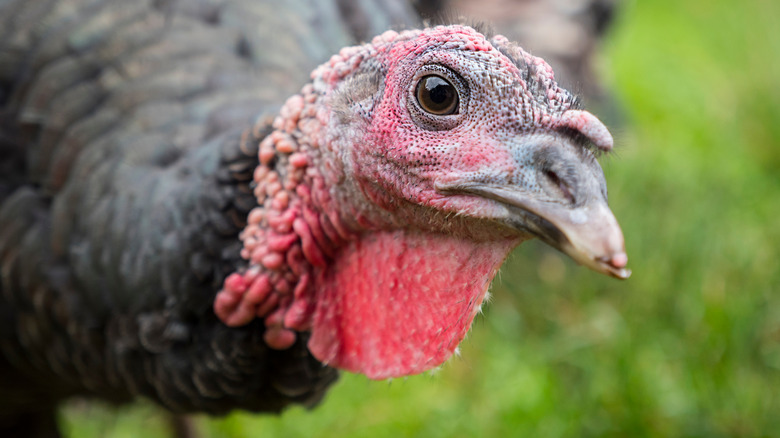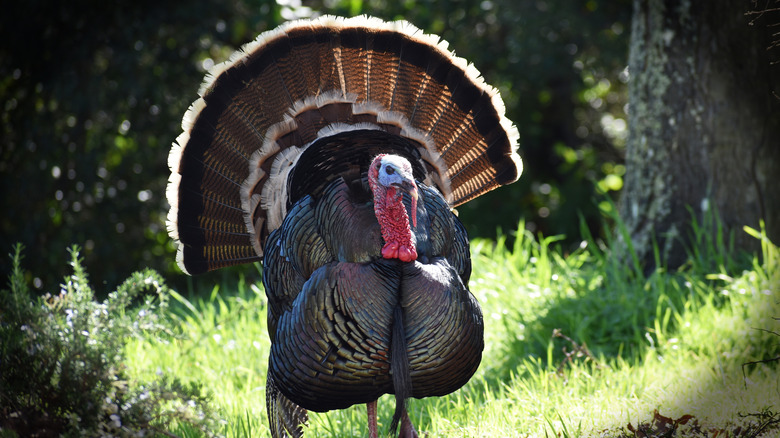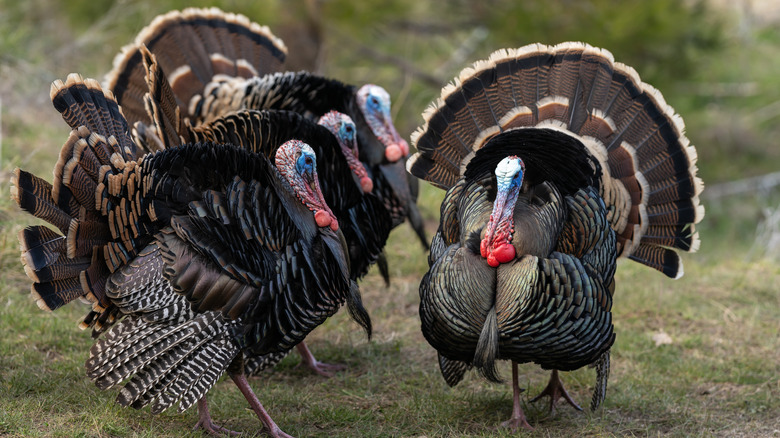Why Do Turkeys Have Wattles?
Most of the time when we see a turkey, it's been plucked and cooked. But, a turkey doesn't have to be plated in the middle of the Thanksgiving table to be recognizable as the Willcounty Forest Preserve District points out. Turkeys have plenty of unique features that make them easy to spot, including their large size — turkey's can be up to 44 inches long — as well as their shimmering feathers, according to PBS.
There's also the wattle. Much more prominent on male birds than female turkeys, according to Pets on Mom. This piece of bumpy red skin hangs below the chin, according to Mental Floss. It is different from the snood, which is on top of the beak. Both pieces of anatomy carry the bumpy bits of skin called the caruncles. But, although lots of people can recognize the wattle as a distinctive feature of turkeys, what is its purpose?
Wattles have multiple purposes
Wattles can serve a turkey in quote a few ways. One use of the wattle is to help disperse body heat, according to the Willcounty Forest Preserve District. Like all birds, turkeys don't sweat, which means they can't disperse heat in the same way that humans can. While other birds have responded to this problem by evolving large beaks or using their wings to reduce excess heat, turkeys have evolved the wattle, according to Mental Floss. The high surface area of the wattle and the other skin around their heads can help disperse some of the body heat that turkeys build up on sunny days.
Wattles can also provide insight into a turkey's mental state. When they are faced with a rush of emotions, be it anger or arousal, blood rushes into the wattle, coloring it a dark red, according to Pets on Mom. On the other hand, when blood retreats from the wattle, its color fades and it may become more blue-tinted, indicating that the turkey is unwell or afraid.
Wattles are essential to turkey mating
But, perhaps the wattle's most prominent use is its sexier applications. Wattles are key to the turkey mating process, according to Audubon. Because turkey's wattles turn dark red when they're aroused, the coloring of the male turkey's wattle can be a key signal for female turkeys that a male is ready to mate.
Other important turkey features for mating include the snood — the wrinkle of skin atop a turkey's beak. Female turkeys prefer male turkeys with longer snoods, so the length of a turkey's snood can do a lot to determine if or how often a turkey will mate in a given season, according to Mental Floss.
To attract a mate, male turkeys employ a variety of tactics, including their characteristic gobble which alerts female turkeys to their presence, according to PBS. Male turkeys also carry out a mating walk for females which involves showing off their plumage.


